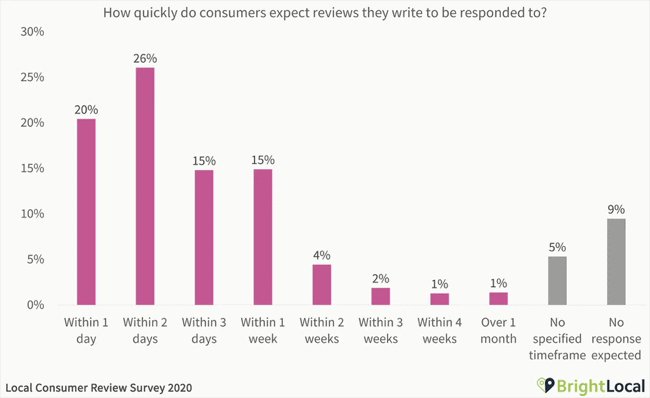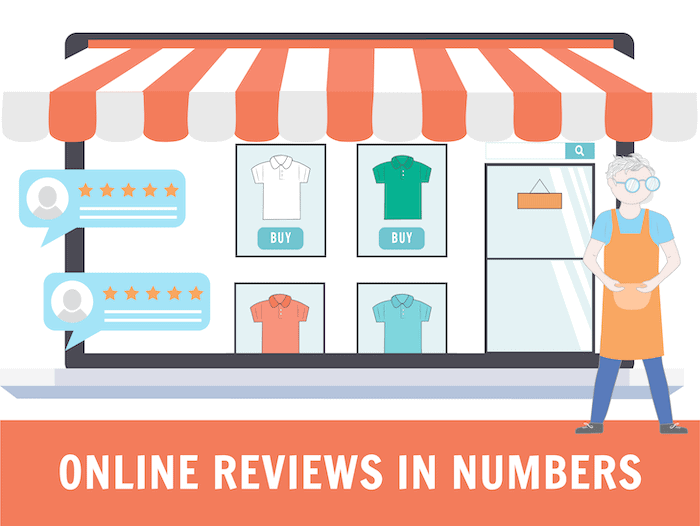When I was in college, I used to work part-time in a phone store. The iPhone 3G had just been released (yes, it was that long ago), and, as you can expect, every second customer who came in wanted one.
Although they had all done their research and knew the product inside out, there was one burning question that almost everyone had:
What did I think of it?
It wasn’t because I was some kind of iPhone guru, or because my personal opinion particularly mattered. Most of the time, customers were just looking for reassurance that they were making the right decision.
Over a decade later, not much has changed – the latest iPhone still sells like hot cakes, and people continue to seek out the opinions of others before making a purchase decision.
What has changed, however, is where people are now buying. Ecommerce has exploded, and in the last six years alone, global ecommerce sales have tripled. In 2020, they’re projected to hit $4.1 trillion, fueled in large part by the pandemic’s push to online (rather than in-store) shopping.
With all that in mind, I thought it would be interesting to find out:
- Just how much do online reviews influence sales?
- Is there an optimal number of reviews to display on your product pages?
- What is the impact of negative reviews?
In this article, I’ll answer these questions by taking a look at the most important online review statistics to know in 2021, to help you implement the best strategy for your store’s online reviews.
So, let’s dive right in!
How many customers read online reviews?
As it turns out, a lot. One study by the Spiegel Research Center found that the vast majority of online shoppers (95%) read reviews before deciding to make a purchase. A 2020 study from Trustpilot reported similar findings, with 89% of consumers checking reviews online before purchasing.
How much do customers trust these reviews? Again, this number was high, with BrightLocal reporting that 76% of customers trust online reviews as much as personal recommendations.
However, this varied across age groups – the highest level of trust was seen in consumers aged between 35-54 (89%), while the lowest level was in the 55+ age group (only 39% trusted online reviews as much as personal recommendations).
And in case you needed more proof that online reviews are powerful, consider this: Fan and Fuel found that 92% of consumers hesitate to buy when there are no reviews available.
How persuasive are reviews in influencing a purchase decision?
There’s plenty of evidence that shows how online reviews have a direct influence on sales. In fact, research by Podium discovered that 82% of consumers have purchased a product based on the content of a review.
What’s more, a study by Bazaarvoice identified that product pages displaying online reviews experienced an astonishing 354% lift in conversion, compared to those that didn’t. It also found that revenue per visitor increased by 446% – so it seems the more customers trust you, the more they will spend.
Reviews have an even greater impact when you’re selling higher-priced items. Spiegel Research Center’s study found that reviews displayed for a lower-priced product resulted in an increased conversion rate of 190%. However, reviews displayed for more expensive products increased conversions by a whopping 380%.
So, displaying online reviews clearly has a positive impact on sales. But is there a magic number when it comes to the right amount of reviews to display?
What is the optimal number of online reviews?
Surprisingly, a ‘perfect’ number does exist – although it depends on who you ask. Spiegel Research Center identified that products with 5 reviews are 270% more likely to be purchased.

That certainly sounds attainable for most online stores – however, Bizrate Insights’ research revealed that most consumers (nearly 28%) need to see between 11 to 50 reviews to deem a product trustworthy. A further 21% expect to see between 51-100 reviews!
However, it seems there is such a thing as too many reviews. Less than 5% of consumers trust products with 501-1,000 reviews, suggesting a perceived association between high review numbers and fake reviews (more on that a little later).
Not only that – BrightLocal also found that, in order for consumers to believe a product’s average star rating, 40 reviews were needed to back that up.
Interestingly, 73% of consumers ignore reviews that are more than a month old, suggesting that recency could be just as important a factor as quantity.
What is the impact of star ratings and negative reviews?
Star ratings hold a lot of sway in the world of online shopping. One study by Synup found that 82% of shoppers wouldn’t buy from stores with fewer than 3 stars on review sites like Google or Yelp. A similar figure cites 3.3 as being the minimum star rating that a business would need for consumers to engage with them.
It stands to reason that stores with higher star ratings are perceived to be more trustworthy. According to ReviewTrackers, 80% of customers said the star ratings they trusted the most were 4.0, 4.5 and 5 stars.
The same study also found that 94% of consumers had avoided a business because of a negative online review. Which begs the question: just how damaging are negative reviews?
As it turns out, in the right scenario, they can actually be beneficial. Research by Revoo revealed that customers spend 5 times longer on sites with negative reviews, leading to an 85% increase in conversion rate. It seems like that extra time customers spend digging into those reviews actually works in the store’s favour!
Not only that – it appears that consumers regard ‘too-perfect’ reviews as suspicious, and use negative reviews as an indicator of objectivity. According to Trustpilot, 51% said that a mix of both positive and negative reviews was their strongest prompt to purchase, even above verified or recent reviews.
So, there is a place for negative reviews. But there’s a delicate balancing act required to make sure that they don’t outnumber the positive.
As a review website ourselves, we often get asked about Wix’s poor rating on Trustpilot, where it scores a “Bad” rating with only 1.5 stars (whereas on our website it’s the top-rated website builder). So from our experience, people are definitely worried about bad ratings.

Their ratings have to be taken with a grain of salt, though, as the sentiment on crowdsourced review sites are often very negative unless the reviews are actively managed through techniques like “review gating”, where you encourage only happy customers to leave a rating.
Which leads us to our next question…
How should online store owners deal with negative reviews?
Anyone who has ever worked in retail knows that customers are more likely to talk about negative experiences than positive ones. In fact, Zendesk discovered that 46% of reviews on online reviews sites recounted bad experiences, compared to just 27% that described good ones.
Most of the time, consumers leave negative reviews not only to vent – they also have an expectation that the store owner will respond to them. BrightLocal found that the vast majority of shoppers (76%) aren’t willing to wait more than a week for a response, and nearly 50% expect a response within two days. But, it seems they’re not the only ones looking for a response.

The same study identified that 96% of consumers who research online reviews also read the business’s responses, and as many as 70% are more likely to buy from a business that responds to their reviews (provided that those responses are personalized and genuine).
A similar finding from Trustpilot revealed that 64% would prefer to buy from a business that has responded quickly to a mistake they made, rather than from one that appears to be absolutely perfect.
So, being proactive in responding to customers is perceived as a very positive thing. Censoring customer’s negative reviews, on the other hand, is not.
Although it may seem like the easiest way to deal with them, consumers don’t look too kindly on businesses that delete or censor negative reviews. According to Trustpilot, 62% of consumers said they would stop using platforms that were found to be doing this.
What about fake reviews? As you’d expect, those are a big no-no. 80% of consumers said they had come across at least one fake review in the past year, and 62% believe that fake reviews should be removed.
Interestingly, 16% of consumers who see a 5-star review immediately suspect that it’s fake – another reason why it’s so important not to censor negative reviews.
Where do customers search for reviews?
As we’ve seen, displaying reviews on your product pages can have a significant impact on conversion rates. But it’s not enough to rely solely on these kinds of reviews. That’s because only 20% of consumers say they fully trust the reviews on a business’s website, according to Bizrate.
Online stores owners also need to focus on getting reviews from other channels – in particular, from Amazon (64% of shoppers said they found it the most helpful for finding reviews), Google (57% percent of shoppers use it to find online reviews), and Yelp and Facebook (around 20% each).
Put simply, the more places a customer can find opinions about your business, the more confidence that inspires in your business. It can also a good way for you to assess customer satisfaction and solve your clients’ pain points.
Do reviews have an impact on search engine rankings?
They certainly do – although the evidence points to this being more the case for local search results.
Let’s consider this example: you have an online store where you sell specialty coffee beans, but also have a small physical store. It’s located in Dalston, a hip, coffee-loving neighborhood of east London.
If you’ve set your physical store up on Google My Business and have a relatively high number of positive Google reviews, it’s more likely that:
- Your store would appear in the Google local pack results for anyone searching for ‘specialty coffee beans’ in the local area. That’s because reviews are thought to make up 15% of Google local pack ranking factors, according to Moz
- If you had more reviews and a higher star rating than a competitor, visitors would click on your store instead of theirs, as around 23% of clicks are motivated by review numbers and star ratings
- You would get 39% more clicks from Google local results if your store had a 5-star rating, compared to just a 1-star rating
While it’s a little harder to find statistics that measure the SEO impact of reviews displayed on a store’s own website, logic (and experience) tells us that featuring more user-generated content can only be a good thing in Google’s eyes. As Google’s John Mueller has stated: “What I’d recommend… is to find a way to get more content onto the page. A simple way to do that could be to let people comment.”
How can you get more online reviews?
As we’ve seen, online stores should be aiming to have a decent number of reviews on their store, and on other review sites. However, the data so far has shown that consumers seem a lot more motivated to leave negative reviews. So how can you get more positive reviews?
It might actually be easier than you think. According to GlobalWebIndex, 47% of internet users worldwide leave online reviews each month. Younger audiences in particular were most likely to do this – 53% of users aged 25-34 posted reviews every month. In contrast, only 30% of those aged 55-64 left monthly reviews.
What’s really surprising is that, according to Podium, 77% of consumers would be willing to leave an online review if asked. And the reasons for this were often altruistic – 85% said they leave online reviews to help either the business, or other consumers.
So, is it really as simple as just asking for a review? It may very well be. In fact, up to 80% of reviews are the result of a follow-up email – something that can be easily implemented with an automated, post-purchase email program.
Other than email, customers also received review requests through other digital channels, including through social media (26%), via SMS (20%) and by chatbot (15%).
ReviewTrackers has noted a trend of reviews becoming more and more positive over time, particularly on sites like Google and Facebook. It attributes this to the fact that it’s relatively easy to leave reviews on these sites (people are almost always logged into their Google and Facebook accounts), and when less effort is involved in leaving a review, people are more likely to leave positive ones. So, this is something that could certainly work in store owners’ favor when asking satisfied customers to leave a review.
Online Reviews Statistics: Key Takeaways
These online reviews statistics reinforce what many online retailers already know:
- Most online shoppers (95%) read reviews before making a purchase
- Generally, the more reviews, the better – although too many can start to look suspicious
- Star ratings are important, although customers may also regard a perfect rating of 5 stars with caution
- Rather than detracting from positive reviews, negative reviews can actually help to convey objectivity, leading to a better sense of trustworthiness
It might be helpful for ecommerce store owners to keep the following in mind when considering their online review strategy:
- Displaying product reviews on your site is important – especially as product pages with reviews have 3.5 times the number of conversions as pages without reviews. But it’s also important to consider other review sources, such as Google, Facebook and Amazon, as the majority of shoppers will consult these sources first
- Responding to reviews (especially negative ones) can have a huge impact on whether other shoppers choose to buy from you, as two thirds of consumers are more likely to buy from a business that responds to their reviews
- If you also have a physical store, getting positive reviews on Google can greatly influence your rankings in local search results – and increase traffic to your site
- Customers are more and more willing to leave positive reviews – so it doesn’t hurt to ask. Consider the various digital channels you can use to encourage happy customers to leave a review
- Younger shoppers are more likely to leave reviews, and more likely to trust them, so keep this audience in mind when thinking about how to get more reviews
What has your store’s experience been with online reviews? Let us know in the comments below!
THE BEHIND THE SCENES OF THIS BLOG
This article has been written and researched following a precise methodology.
Our methodology

